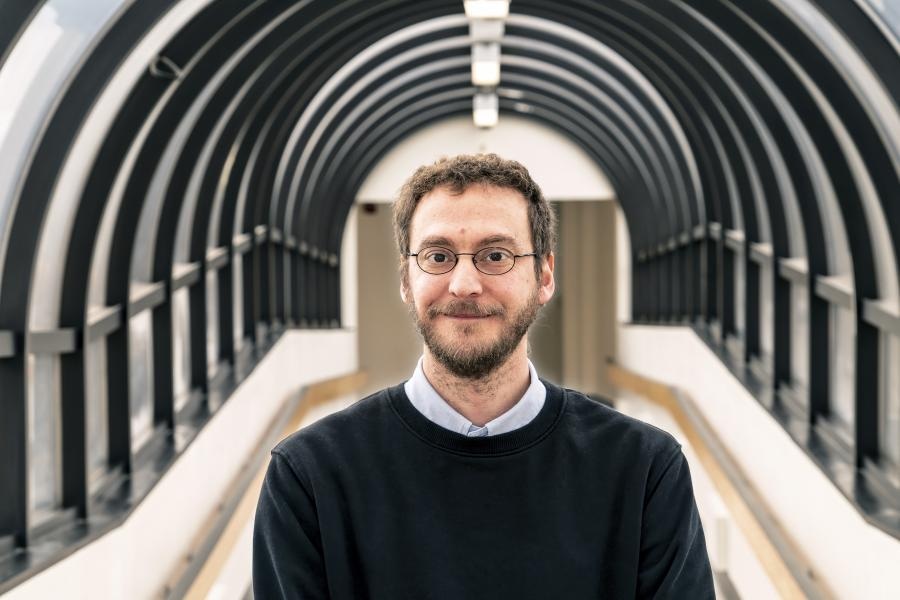Jul 25 2019
Subatomic particles, which whiz around ring-shaped fusion equipment called tokamaks, merge at times and liberate enormous amounts of energy. However, these particles—a broth of charged electrons and atomic nuclei, or ions, together called plasma—can sometimes escape out of the magnetic fields restrict them to the tokamaks.
 PPPL physicist Mario Podesta. (Image credit: Elle Starkman)
PPPL physicist Mario Podesta. (Image credit: Elle Starkman)
The leakage cools down the plasma, thereby decreasing the efficiency of the fusion reactions and impairing the machine. Currently, physicists have substantiated that with the help of a revised computer code, such leaks can be predicted and eventually prevented from occurring.
The researchers updated TRANSP, the plasma simulation code created by the U.S. Department of Energy’s (DOE) Princeton Plasma Physics Laboratory (PPPL), and used it in fusion research centers across the globe. They achieved this by installing a new bit of code called a kick model into one of the TRANSP components.
The kick model—which is so named as it mimics jolts of energy kicking the particles inside the plasma—enables TRANSP to replicate particle behavior more precisely than previously possible.
With the help of subprograms called NUBEAM and ORBIT that distill information from raw data to model plasma behavior, this updated edition of TRANSP could assist physicists better perceive and predict the leaks, and also to develop engineering solutions to reduce them.
Fusion powers the sun and stars and involves the fusing of light elements in the form of plasma that produces enormous amounts of energy. Plasma is the hot, charged state of matter formed of atomic nuclei and free electrons. Researchers are looking to simulate fusion on Earth for an almost endless supply of energy to produce electricity.
The researchers identified that the updated version of TRANSP precisely modeled the impact of the sawtooth instability, which is a type of disturbance that affects the fusion reactions, on the motion of highly energetic particles that help induce fusion reactions.
These results are important because they may allow physicists to use the same approach to deal with a broad spectrum of instabilities without switching from one model to another depending on the specific problem.
Mario Podestà, Physicist, PPPL
Podestà is a coauthor of the paper that described the study outcomes in Nuclear Fusion.
The outcomes, based on sawtooth instabilities that emerged during the functioning of PPPL’s National Spherical Torus Experiment-Upgrade (NSTX-U) in 2016, extend earlier PPPL studies into incorporating kick models into TRANSP.
According to Podestà, TRANSP’s updated version has the potential to replicate plasma behavior of experiments that have not been performed yet.
Because we understand the physics built into the kick model, and because that model successfully simulated results from past experiments for which we have data, we have confidence that the kick model can accurately model future experiments.
Mario Podestà, Physicist, PPPL
Going forward, the scientists intend to identify what happens between instabilities to obtain a complete picture of what takes place in the plasma. Meanwhile, Podestà and the other researchers are encouraged by the current study outcomes.
We now see a path forward to improving the ways that we can simulate certain mechanisms that disturb plasma particles. This brings us closer to reliable and quantitative predictions for the performance of future fusion reactors.
Mario Podestà, Physicist, PPPL
This study was supported by the DOE’s Office of Science (FES). The team included researchers from PPPL and the University of California, Irvine.